Related Research Articles
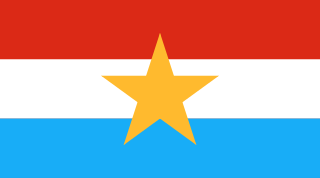
The Tatmadaw or Sit-Tat is the military of Myanmar. It is administered by the Ministry of Defence and composed of the Myanmar Army, the Myanmar Navy and the Myanmar Air Force. Auxiliary services include the Myanmar Police Force, the Border Guard Forces, the Myanmar Coast Guard, and the People's Militia Units. Since independence in 1948, the Tatmadaw has faced significant ethnic insurgencies, especially in Chin, Kachin, Kayin, Kayah, and Shan states. General Ne Win took control of the country in a 1962 coup d'état, attempting to build an autarkic society called the Burmese Way to Socialism. Following the violent repression of nationwide protests in 1988, the military agreed to free elections in 1990, but ignored the resulting victory of the National League for Democracy and imprisoned its leader Aung San Suu Kyi. The 1990s also saw the escalation of the conflict involving Buddhists and Rohingya Muslims in Rakhine State due to RSO attacks on the Tatmadaw forces, which saw the Rohingya minority facing oppression and, starting in 2017, genocide.

The British Armed Forces are the military forces responsible for the defence of the United Kingdom, its Overseas Territories and the Crown Dependencies. They also promote the UK's wider interests, support international peacekeeping efforts and provide humanitarian aid.
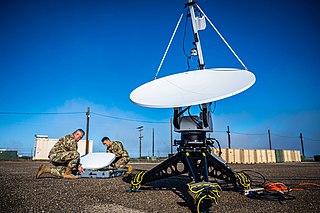
Electromagnetic warfare or electronic warfare (EW) is warfare involving the use of the electromagnetic spectrum or directed energy to control the spectrum, attack an enemy, or impede enemy operations. The purpose of electromagnetic warfare is to deny the opponent the advantage of—and ensure friendly unimpeded access to—the EM spectrum. Electromagnetic warfare can be applied from air, sea, land, or space by crewed and uncrewed systems, and can target communication, radar, or other military and civilian assets.

Psychological warfare (PSYWAR), or the basic aspects of modern psychological operations (PsyOp), has been known by many other names or terms, including Military Information Support Operations (MISO), Psy Ops, political warfare, "Hearts and Minds", and propaganda. The term is used "to denote any action which is practiced mainly by psychological methods with the aim of evoking a planned psychological reaction in other people".
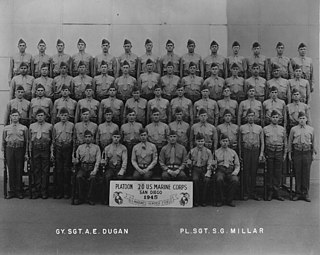
A platoon is a military unit typically composed of two to four squads, sections, or patrols. Platoon organization varies depending on the country and the branch, but a platoon can be composed of 20–50 troops, although specific platoons may range from 10 to 100 people. A platoon is typically the smallest military unit led by a commissioned officer. The platoon leader is usually a junior officer—a second or first lieutenant or an equivalent rank. The officer is usually assisted by a platoon sergeant.

The Canadian Armed Forces are the unified military forces of Canada, including land, sea, and air commands referred to as the Canadian Army, Royal Canadian Navy, and the Royal Canadian Air Force. The CAF also operates several other commands, including the Canadian Forces Intelligence Command, the Canadian Joint Operations Command, and the Canadian Special Operations Forces Command. Personnel may belong to either the Regular Force or the Reserve Force, which has four sub-components: the Primary Reserve, Supplementary Reserve, Cadet Organizations Administration and Training Service, and the Canadian Rangers. Under the National Defence Act, the Canadian Armed Forces are an entity separate and distinct from the Department of National Defence, which also exists as the civilian support system for the forces.
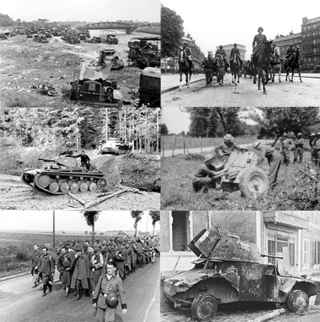
The Battle of France, also known as the Western Campaign, the French Campaign and the Fall of France, during the Second World War was the German invasion of France, that notably introduced tactics that are still used. France and the Low Countries were conquered, ending land operations on the Western Front until the Normandy landings on 6 June 1944.

The War Office has referred to several British government organisations in history, all relating to the army. It was a department of the British Government responsible for the administration of the British Army between 1857 and 1964, when its functions were transferred to the new Ministry of Defence (MoD). It was at that time, equivalent to the Admiralty, responsible for the Royal Navy (RN), and the Air Ministry, which oversaw the Royal Air Force (RAF). The name 'War Office' is also given to the former home of the department, located at the junction of Horse Guards Avenue and Whitehall in central London. The landmark building was sold on 1 March 2016 by HM Government for more than £350 million, on a 250 year lease for conversion into a luxury hotel and residential apartments.

The United States Army Special Forces (SF), colloquially known as the "Green Berets" due to their distinctive service headgear, is the special operations branch of the United States Army. Although technically an Army branch, the Special Forces operates similarly to a functional area (FA), in that individuals may not join its ranks until having served in another Army branch.
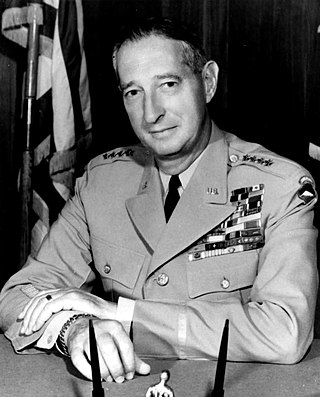
Mark Wayne Clark was a United States Army officer who saw service during World War I, World War II, and the Korean War. He was the youngest four-star general in the US Army during World War II.

The North African campaign of World War II took place in North Africa from 10 June 1940 to 13 May 1943. It included campaigns fought in the Libyan and Egyptian deserts, in Morocco and Algeria, and in Tunisia. The campaign was fought between the Allies and the Axis Powers. The Allied war effort was dominated by the British Commonwealth and exiles from German-occupied Europe. The United States officially entered the war in December 1941 and began direct military assistance in North Africa on 11 May 1942.

The Intelligence Corps is a corps of the British Army. It is responsible for gathering, analysing and disseminating military intelligence and also for counter-intelligence and security. The Director of the Intelligence Corps is a brigadier.

The Russian Ground Forces, also known as the Russian Army, are the land forces of the Russian Armed Forces.

The Hundred Days Offensive was a series of massive Allied offensives that ended the First World War. Beginning with the Battle of Amiens on the Western Front, the Allies pushed the Imperial German Army back, undoing its gains from the German spring offensive.

A military staff or general staff is a group of officers, enlisted and civilian staff who serve the commander of a division or other large military unit in their command and control role through planning, analysis, and information gathering, as well as by relaying, coordinating, and supervising the execution of their plans and orders, especially in case of multiple simultaneous and rapidly changing complex operations. They are organised into functional groups such as administration, logistics, operations, intelligence, training, etc. They provide multi-directional flow of information between a commanding officer, subordinate military units and other stakeholders. A centralised general staff results in tighter top-down control but requires larger staff at headquarters (HQ) and reduces accuracy of orientation of field operations, whereas a decentralised general staff results in enhanced situational focus, personal initiative, speed of localised action, OODA loop, and improved accuracy of orientation.
A senior officer is an officer of a more senior grade in military or other uniformed services. In military organisations, the term may refer to any officer above junior officer rank, but usually specifically refers to the middle-ranking group of commissioned officers above junior officer ranks but below flag, general or air rank. In most countries, this includes the ranks of lieutenant commander/major/squadron leader, commander/lieutenant colonel/wing commander and naval captain/colonel/group captain, or their equivalents. In some countries, it also includes brigadiers and commodores.

Military organization (AE) or military organisation (BE) is the structuring of the armed forces of a state so as to offer such military capability as a national defense policy may require. Formal military organization tends to use hierarchical forms.

The Myanmar Army is the largest branch of the Armed Forces (Tatmadaw) of Myanmar and has the primary responsibility of conducting land-based military operations. The Myanmar Army maintains the second largest active force in Southeast Asia after the People's Army of Vietnam. It has clashed against ethnic and political insurgents since its inception in 1948.
Military call signs are call signs or specialized form of nickname assigned as unique identifiers to military communications. In wartime, monitoring an adversary's communications can be a valuable form of intelligence. Consistent call signs can aid in this monitoring, so in wartime, military units often employ tactical call signs and sometimes change them at regular intervals. In peacetime, some military stations will use fixed call signs in the international series.

The Wagner Group, officially known as PMC Wagner, is a Russian state-funded private military company (PMC) controlled until 2023 by Yevgeny Prigozhin, a former close ally of Russia's president Vladimir Putin. The Wagner Group has used infrastructure of the Russian Armed Forces. Evidence suggests that Wagner has been used as a proxy by the Russian government, allowing it to have plausible deniability for military operations abroad, and hiding the true casualties of Russia's foreign interventions.
References
- ↑ Forty, George (1998). British Army Handbook, 1939-1945. Sutton. p. 107. ISBN 9780750914031 . Retrieved 12 June 2023.
- ↑ Cooksey, Jon (2012). Ian McKay–The Last VC of the 20th Century. Pen & Sword Books. ISBN 9781781598085 . Retrieved 12 June 2023.